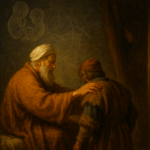
Isaac and Rebecca: Deception or Wigner’s Friend Paradox?
Synopsis The narrative of the “stolen blessings” in Parashat Toldot presents a profound moral paradox: How could Rebecca, a righteous prophetess, and Jacob, the archetype

Synopsis The narrative of the “stolen blessings” in Parashat Toldot presents a profound moral paradox: How could Rebecca, a righteous prophetess, and Jacob, the archetype
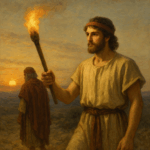
Chayei Sarah and the Physics of Makifim and Pnimim Synopsis This essay reveals a profound numerical convergence between Torah and quantum physics through the number
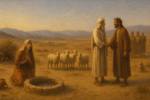
Summary This essay examines two consecutive narratives from Parshat Vayeira, each featuring a well and each posing a distinct epistemological challenge. Hagar’s well (Genesis 21:19)

(Parshat Vayeira, Genesis 21:14-21) Hagar and Ishmael are dying of thirst in the desert. In her despair, Hagar places her son under a bush and
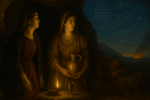
There is not a Shabbos in which we do not read the parasha of Lot (Bereshis Rabbah 51:9) The Kabbalistic Dimension: Hidden Unities and Dimensional

And Sarah laughed within herself, saying, “After I have become worn out, will I have ednah [renewal]?” (Genesis 18:12) Sarah’s laugh is more than skepticism—it
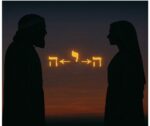
When G‑d promises great wealth to Abram, after Abram refuses the spoils of war offered by the King of Sodom, Abram retorts: What can You
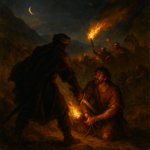
When Abram heard that his kinsman had been taken captive, he mustered his trained men… and went in pursuit. (Genesis 14:14) Abraham just separated from

Everyone marvels at the beauty of a rainbow—its perfect arc, its radiant colors. Yet, in truth, the rainbow doesn’t exist out there. The spectrum of

VeZot HaBerachah and the Hoshana Rabbah custom of striking the ground with willow twigs tl;dr Incense (ketoret) means “binding,” which we interpret as entanglement; the
This week’s parashah is Ha’azinu—Moses’s final song, a duet between heaven and earth that asks creation itself to listen. “Give ear, O heavens… let the

Alexander Poltorak Abstract This essay addresses the anigmatic statement of the Jewish Sages, stating that G-d created this world with the letter Heh and the
By Alexander Poltorak Introduction In the first installment of this essay, “Collapsing the Wave Function of Urim and Thummim,”[1] we discussed the inherent duality of
By Alexander Poltorak Abstract This essay explores the profound connections between the biblical laws of tzaraath (Leviticus 13-14) and modern concepts of entropy and the
By Alexander Poltorak Abstract The Torah portion of Shemini records the climactic eighth day of the Tabernacle’s dedication, the moment when divine fire finally descends.
By Alexander Poltorak Introduction The relationship between the laws of physics and the conditions necessary for life is among the most profound mysteries in both
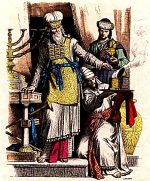
By Alexander Poltorak Dedicated to the refuah shaleimah (a complete and speedy recovery) of David ben Leah And thou shalt put in the breastplate of

By Alexander Poltorak And there I will meet with you, and I will speak with you from above the cover, from between the two cherubim
By Alexander Poltorak The Tree of Life and the Tree of Knowledge as Metaphors for the Wave Function and Measurement Summary This essay proposes a
By Alexander Poltorak I. Introduction The confrontation between Jacob and an unidentified being in Genesis raises fundamental questions about the nature of consciousness, identity, and
This post continues the discussion we began in “Bereshit: The Binary Universe I” and continued in “The Binary Universe II: Angels as Microprocessors” and “Binary
This post continues the discussion we began in “Bereshit: The Binary Universe I” and continued in “The Binary Universe II: Angels as Microprocessors.” At the

The parallels we have uncovered between the four elements, the letters of the Tetragrammaton, and the worlds of Seder Hishtalshelut suggest that the ancient sages
And G-d said to Abram, “Go forth from your native land and from your father’s house to the land that I will show you.” (Genesis
And it came to pass, when he was come near to enter into Egypt, that he said unto Sarai his wife: “Behold now, I know
Abstract This essay explores the profound significance of the letter Bet (ב), the first letter of the Torah, and its numerical value of two as

This essay explores a novel parallel between quantum mechanical principles and the biblical creation narrative through etymological analysis of the Hebrew terms “erev” (evening) and
Look forth from Thy holy habitation, from heaven, and bless Thy people Israel, and the land which Thou hast given us, as Thou didst swear
Zealotry and Mercy: Parallels Between Pinchas and the War in Gaza The biblical story of Phinehas (Heb. Pinḥas or Pinchas) presents a complex moral scenario
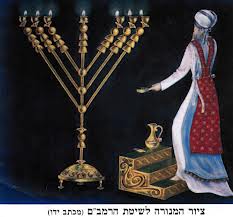
The Temple Menorah served as a lighthouse, illuminating darkness and providing purpose and direction.
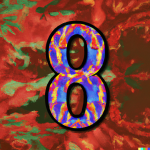
And on the eighth day, the flesh of his foreskin shall be circumcised. Leviticus 12:3 In the Torah portion of Tazria, we are commanded to

The Torah portion Tzav describes a ritual performed by Moses in consecrating Aaron as the High Priest (Kohen Gadol) and his sons as priests (kohanim):
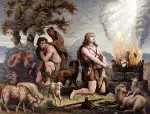
In his commentary on this week’s Torah Portion, Yitro, Rabbi Chayim Vital, writing in the name of his teacher, the Ari-zal, states that Abel was
The current Torah portion Beshalach tells about the splitting of the Sea of Reeds. As I discussed in my essay, “Collapse and Revelation,” the splitting
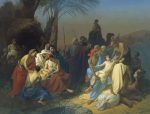
The story of Joseph and his brothers, described in the Torah portion of Vayeshev, presents many problems. Classical biblical commentators interpret the conflict between Joseph
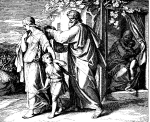
Like most Jewish families worldwide, last Shabbat, the conversation revolved around the situation in the Middle East and the war in Gaza. The question was,

And for the unclean they shall take of the ashes of the burning of the purification from sin, and running water shall be put thereto
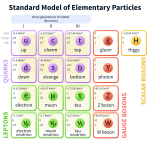
Introduction What could the Standard Model of particle physics possibly have in common with biblical accounts of the Israelites’ travels in the Sinai Desert, Kabbalistic

Einstein’s Special Theory of Relativity (STR) is broadly misunderstood by the public. In most popular science books, relativity theory is hailed for introducing relativity to

The limits of my language mean the limits of my world. Ludwig Wittgenstein On Rosh Chodesh (the New Moon of the Hebrew month of) Sh’vat,
Structurally identical biblical accounts of creation, destruction, and restoration are viewed as a manifestation of dialectic triad thesis-antithesis-synthesis.
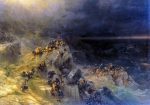
Noah’s flood was a cataclysmic event with no parallels in recorded history. All of humanity (along with flora and fauna)—except for Noah and his family
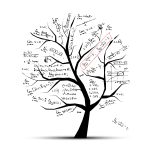
To Mendel Almost three years ago, in December of 2019, I posted an essay, “The Tree of Knowledge as a Metaphor for Superposition of States

Ki Tavo And it shall come to pass, when the Lord thy God shall bring thee into the land whither thou goest to possess it,
In the proposed allegorical interpretation, the soldier in the war is a metaphor for the Jewish people, who are all “soldiers” in G‑d’s army Tzivot
In the six hundredth year of Noah’s life, in the second month, on the seventeenth day of the month, on the same day were all

And G‑d created man in His own image, in the image of G‑d created He him; male and female created He them. And G‑d blessed

Now the earth was unformed and void. Genesis 1:2 We have a big problem in cosmology: the problem of the initial conditions of the universe at

The collapse of the wave function is the process of revealing hidden possibilities. Reducing uncertainty reveals information. Until the wave function collapse, the system is
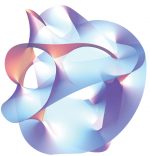
And they made their lives bitter with hard service, in mortar and in brick… Exodus 1:14 On a literal level, the Egyptian exile (Galut Mitzrayim)

And afterwards she bore a daughter, and called her name Dinah. (Genesis 30:21) In my previous essay, “The Conflict Between Joseph And His Brothers—A Gender
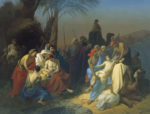
The confrontation between Joseph and his brothers is one of the most troubling stories of the Bible. Joseph and his brother—twelve sons of Jacob—were the
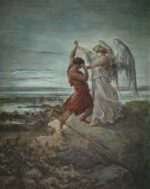
So the present passed over before him; and he himself lodged that night in the camp. And he rose up that night, and took his

Now Laban had two daughters: the name of the elder was Leah, and the name of the younger was Rachel. (Genesis 29:16) Rabbi Isaiah Horowitz (the

And these are the chronicles of Isaac… (Genesis 25:19) So Esau went unto Ishmael, and took unto the wives that he had Mahalath the daughter
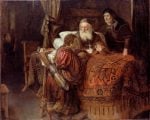
And Rebekah spoke unto Jacob, her son, saying: “Behold, I heard thy father speak unto Esau thy brother, saying: Bring me venison, and make me

And Abraham took another wife, and her name was Keturah. (Genesis 25:1) Keturah: This is Hagar. She was called Keturah because her deeds were as

And Abraham took another wife, and her name was Keturah (Genesis 25:1) As I discussed in the earlier essay, “Yom Kippur – Disentangling the
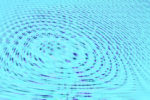
This is My covenant, which ye shall keep, between Me and you and thy seed after thee: every male among you shall be circumcised. And

Michael Frayn’s 1998 play, Copenhagen, concerns a meeting between two great physicists, Niels Bohr and Werner Heisenberg, in 1941 in Copenhagen. In this play, the
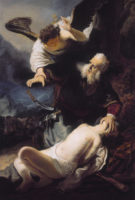
And He said: “Take now thy son, thine only son, whom thou lovest, even Isaac, and get thee into the land of Moriah; and offer

A light shalt thou make to the ark…with lower, second, and third stories shalt thou make it. (Genesis 6:16) We mentioned in the previous posts

A light shalt thou make to the ark, and to a cubit shalt thou finish it upward; and the door of the ark shalt thou

Make thee an ark of gopher wood; with rooms shalt thou make the ark, and shalt pitch it within and without with pitch” (Genesis 6:14)

And G‑d said: “Let there be light.” And there was light. And G‑d saw the light, that it was good; and G‑d separated between the
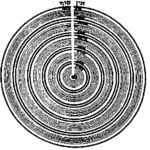
Sweeping Infinities Under the Rug—or Renormalization Having dealt with internal contradictions in the previous section (see Physics of Tzimtzum I — The Quantum Leap and

In the previous post “Physics of Tzimtzum I—The Quantum Leap”, we gave a general overview of the mystical doctrine of tzimtzum—the cornerstone of Lurianic Kabbalah.

Introduction “In the beginning G‑d created the heavens and the earth.” (Genesis 1:1) “In the beginning G‑d created the heavens and the earth,” the Torah
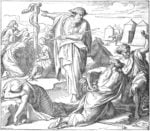
A Study in Form and Matter And Moses prayed for the people. And the Eternal said unto Moses: “Make thee a fiery serpent, and set it
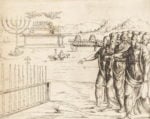
And it came to pass on the morrow, that Moses went into the tent of the testimony; and, behold, the rod of Aaron for the

For the life of the flesh is in the blood.” (Leviticus 17:11) The word translated here as “life” in the Hebrew original is nefesh, i.e.,
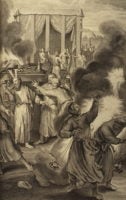
And Nadab and Abihu, the sons of Aaron, took each of them his censer, and put fire therein, and laid incense thereon, and offered strange

And every meal-offering of thine shalt thou season with salt; neither shalt thou suffer the salt of the covenant of thy G‑d to be lacking

The Torah portion Vayakhel deals with the construction of the Mishkan, i.e., the “Tabernacle.” In Kabbalah, the Mishkan is viewed as a microcosm that represents

On the Eve of Shabbat, we received a government mailing containing documents that we were required to fill out and send back to the Census

In the beginning G‑d created the heaven and the earth. (Genesis 1:1) The first verse in the Torah is key to understanding the fundamentals
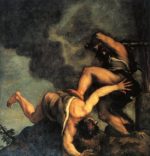
…And Abel was a keeper of sheep, but Cain was a tiller of the ground. And in process of time it came to pass, that Cain

Now the Serpent was more cunning than any beast of the field which the Eternal G‑d had made. (Genesis 3:1) When G‑d placed Adam

And the Eternal G‑d said: “It is not good that the man should be alone; I will make him a helpmate opposite him.” (Genesis 2:18)

As we discussed in the previous post “Singularity and Paradise,” Paradise offers a beautiful metaphor for modern cosmology wherein Eden is the initial singularity preceding

These are the chronicles of the heaven and of the earth when they were created, in the day that the Eternal G‑d made earth and

As we discussed in the earlier post, The Tree of Knowledge as a Metaphor for Superposition of States and Heisenberg’s Uncertainty Principle, the Heisenberg uncertainty
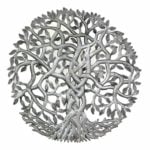
As always in science, every answered question breeds new questions. Now that we understand that the Tree of Life and the Tree of Knowledge are

And out of the ground made the Lord G‑d to grow every tree that is pleasant to the sight, and good for food; and the
And the messengers returned to Jacob, saying: “We came to thy brother Esau, and moreover he cometh to meet thee, and four hundred men with

And the Lord appeared unto him in the plains of Mamre, as he sat in the entrance of the tent in the heat of the
And Abraham drew near, and said: ‘Wilt Thou indeed sweep away the righteous with the wicked? Perhaps there are fifty righteous within the city; wilt

Time is a storm in which we are all lost. ” (William Carlos Williams, Introduction to “Selected Essays”) I always had a hard time relating

Strings vibrate, Souls tremble, Angels are running and returning, G‑d is touching and not touching – The rhythms of the universe… Nothing stays still… all

At the end of the first chapter of the Torah, Genesis (Bereshit), G‑d regrets, as it were, creating humanity that became depraved: And the Lord

And the Lord spoke unto Moses, saying: ‘Command the children of Israel, and say unto them: When ye come into the land of Canaan, this

Then drew near the daughters of Zelophehad …. of the families of Manasseh, the son of Joseph; and these are the names of his daughters:

The Lord spoke to Moses, saying: Speak to the children of Israel and you shall say to them that they shall make for themselves fringes

And all the tithe of the herd or the flock, whatsoever passeth under the rod, the tenth shall be holy unto the Lord.” (Leviticus 27:32)

And ye shall take you on the first day the fruit of goodly trees, branches of palm-trees, and boughs of thick trees, and willows of

And whosoever lieth carnally with a woman, that is a bondmaid, designated for a man, and not at all redeemed, nor was freedom given her;
In my post, “Ye Shall be Disentangled,” I suggested that the verse: “Ye shall be holy, for I, the Lord, your G‑d, am holy” (Levit.
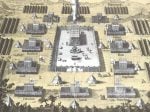
Vectors, Spins, and Gender Speak to the children of Israel, and have them take for Me an offering; from every person whose heart inspires him

And the messengers returned to Jacob, saying: “We came to thy brother Esau, and moreover he cometh to meet thee, and four hundred men with
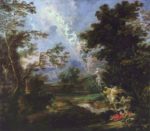
November 19, 2018 And he [Jacob] dreamed, and behold! a ladder set up on the ground and its top reached to heaven; and behold, angels
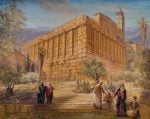
And he [Avraham] spoke with them, saying, “…Listen to me and entreat for me to Ephron the son of Zohar. That he may give me
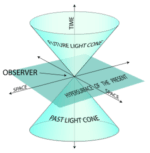
And the life of Sarah was one hundred years and twenty years and seven years… (Gen. 23:1) Why did Esther merit to rule over 127
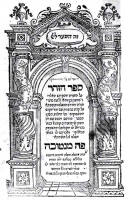
In the six hundredth year of Noah’s life, in the second month, on the seventeenth day of the month… all the fountains of the great
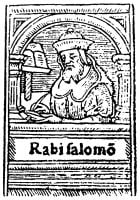
And G‑d saw all that He had made, and behold it was very good, and it was evening and it was morning, the sixth day.

The months of Tishrei is full of holidays, and they all share a common theme—the unification of time—past, present, and future. It all starts with
Listen, O heavens, and I will speak! And let the earth hear the words of my mouth! (Deut. 32:1) In this Torah portion Haazinu, Moses
The previous Lubavitcher Rebbe, the Rebbe Rayatz (a.k.a. the Fridriker Rebbe) told the story about his father, the Rebbe Rashab. Once the brother of Rebbe

If a bird’s nest chances before thee in the way, in any tree or on the ground, with fledglings or eggs, and the mother sitting
The Torah portion, Re’eh, talks about the Sabbatical Year—in Hebrew, Shemitah—the Seventh year. When the Sabbatical year comes, all loans are forgiven, and Jewish servants

The Torah portion Re’eh, begins with the verse: Behold, I set before you this day a blessing and a curse. (Deut. 11:26) The first word
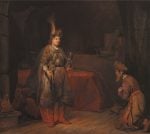
In physics, we seek Grand Unification, also known as the Theory of Everything. The Standard Model describes three out of the four fundamental forces: the
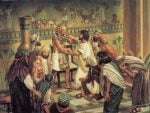
In the Torah portion Miketz, Pharaoh has two dreams. He wakes up agitated and calls on all the wise men of Egypt to interpret his
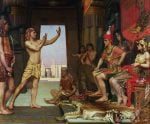
The story of Joseph’s incarceration ends with his successful interpretation of the dreams of the Pharaoh’s chief butler and the chief baker. He ingeniously interpreted ordinary
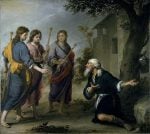
And he [Abraham] lifted up his eyes and looked, and, lo, three men stood over against him… (Genesis 18:2) On this blog, we often discuss

Ye are standing this day all of you before the Lord your G‑d: your heads, your tribes, your elders, and your officers, even all the
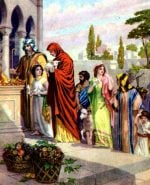
…Thou shalt take of the first of all the fruit of the ground, which thou shalt bring in from thy land that the Lord thy

And on the day that the tabernacle was reared up, the cloud covered the tabernacle, even the tent of the testimony; and at even there

Continuing the theme of my last post, Mishkan – a Metaphor for Quantum Reality, the analogy between the Tabernacle (“Mishkan”) and quantum reality goes even

And when the Tabernacle setteth forward, the Levites shall take it down; and when the Tabernacle is to be pitched, the Levites shall set it
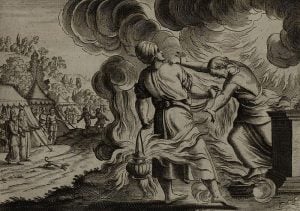
And the Eternal spoke unto Moses, after the death of the two sons of Aaron, when they drew near before the Eternal and died. (Leviticus
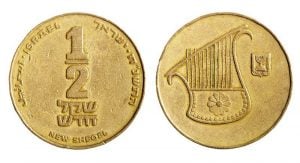
This they shall give, everyone who goes through the counting: half a shekel according to the holy shekel. Twenty gerahs equal one shekel; half of

And thou shalt make two cherubim of gold; of beaten work shalt thou make them, at the two ends of the ark-cover. And make one

And now thy two sons, who were born unto thee in the land of Egypt before I came unto thee into Egypt, are mine; Ephraim

And he arrived upon the place and lodged there all night, because the sun was set; and he took from the stones of the place,
And these are the years of the life of Ishmael: one hundred years and thirty years and seven years (Gen. 25,17) You might say the
This post is a continuation and the conclusion of the previous post, THE FIFTH FORCE. Aside from the connection with the last week’s Torah portion,
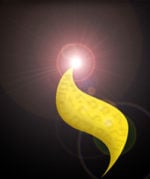
Now, therefore, write ye this song for you, and teach thou it the children of Israel.” (Deut. 31:19) The four known fundamental forces are: gravitational

According to the Saadia Gaon, these two Torah portions – Nitzavim and Vayelech – are really one portion, which sometimes is split into two. In the
In the Torah portion Emor (Leviticus 21:1–24:23), we are instructed to abstain from work every seventh day on Shabbat. Next week’s Torah portion, Behar, continues
Last week Torah portion, Emor, speaks about the prohibition of working on Shabbat. In fact, the Talmud enumerates precisely 39 categories of labor forbidden on

This is the thing which the Lord hath commanded: Gather ye of it every man according to his eating; an omer a head, according to

In the Torah portion Shlach (Numbers 13:1-15:41), Moses instructs his spies to scout the land of Canaan and to bring back a report. He says
In my last year’s post “Balak – Interference of Souls,” I suggested that Balak needed Balaam (Bilam) to cause constructive interference to make the curse
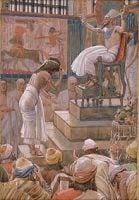
This week, we read in the Torah portion Vayigash (Gen. 44:18–47:27) about Joseph revealing himself to his brothers and Jacob coming to Egypt with his family. This

Synopsis This essay reads Jacob’s agreement with Laban over the streaked, speckled, and spotted sheep as far more than an odd detail in an ancient
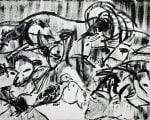
And he took him all these, and divided them in the midst, and laid each half over against the other… And it came to pass, that,
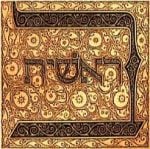
Dedicated to the memory of Professor Yaakob David Bekenstein The Torah opens with the word “Bereshit” – in the Beginning – whose first letter, Bet,
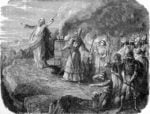
Balak the son of Zippor saw all that Israel had done to the Amorites. Moab became terrified of the people, for they were numerous, and
What came first, the Schrödinger cat or the fig of Rabbi Akiva? You be the judge. Today we present a guest post by Rabbi Dr. David

Speak to the children of Israel and you shall say to them that they shall make for themselves fringes on the corners of their garments,
In this Torah portion, Vayechi, Jacob, gathers his children to reveal to them “Ketz HaYamim”–“the End of Days.” Rashi explains that Jacob’s intention was to
Today is the eighth day of the month of Tevet. On the 8th of Tevet of the Jewish year 3515 (246 BCE), the Torah was

I grew up in Russia and was raised on the metric system based on decimal arithmetic. When we immigrated to the U.S., I had to

The mezuzah is one of the few miẓvot ([divine] “commandments”) for which the Torah states its reward. In this case, the reward is a long

In this Torah portion, Devarim (Deuteronomy 1-3), Moses recalls the travels through the Sinai desert when G‑d told him: Be not at enmity with Moab,
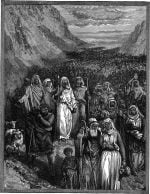
These are the journeys of the children of Israel… (Numbers 33:1) When G-d brought the Jews out from Egypt, He brought them out with the mystery of

In my essay “Secrets of the Talking Ass,” I discussed the phenomenon of Bein HaShmashot (twilight or dusk), which is neither day, nor night, nor
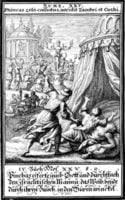
A strange episode at the end of the last Torah portion, Balak, where Phinehas (Pinchas) slain a Jewish prince caught in the act with a
And G‑d opened the mouth of the ass, and she said to Bilam: “What have I done to you, that you have struck me these
…And they prophesied in the camp. (Num. 11:27) In the Torah portion Behaalotecha, there is an interesting narrative: And the Lord said unto Moses: ‘Gather
Speak unto Aaron, and say unto him: “When thou lightest the lamps, the seven lamps shall give light in front of the menorah.” (Num. 8:1)
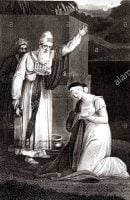
The story of Sotah, a suspected adulteress, is very troubling on the first blush. Why would a woman be subjected to such humiliation? The Lubavitcher
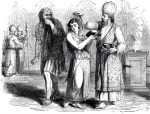
In quantum mechanics, the state of a physical system is described by the so-called wave function (or the “wavefunction”). All attempts by Schrödinger, who first
As we began this Shabbat reading the Fourth Book of Torah—Numbers, I thought, it would be appropriate to post on this blog an excerpt from
Ye shall be holy, for I, the Lord, your G‑d, am holy. Leviticus 19:2 This Torah portion begins with an astonishing statement: Speak unto all
Reading the Haftorah this Shabbat brought to mind scenes from the 2004 Republican National Convention in Madison Square Garden in New York City where attendees where
And let them make me a Sanctuary that I may dwell among them (Ex. 25:8) In modern physics, there are two paradigms usually expressed as locality
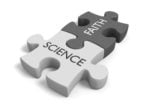
The Torah portion of Yitro (Ex. 18), is the high point of the story of Exodus—the giving of the Decalogue on Mount Sinai. In a strange
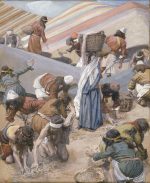
And the house of Israel called the name thereof manna; and it was like coriander seed, white; and the taste of it was like wafers
Do you like riddles? Here is a riddle – what do these two figures represent in the context of Exodus? No Idea? How about
And the answer is… (drum roll, please) Yes, the first figure represents two doorposts and the lintel marked with blood of Passover sacrifice and circumcisions as
There were some good ideas expressed in the comments. Close, but no cigars. Here are some hints for you folks: 1. These two pictures express
Bo: Exodus 10:1 – 14:16 The Erev Shabbat parshat Bo (the Eve of Sabbath of the week when we read the Torah section Bo) 2014

As we have discussed in the post, It’s the time, stupid, Pharaoh never got the message that it’s all about mastery of time. To make
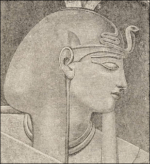
There is a continuous thread about the mastery of time that weaves through the last chapters of the book of Genesis (Bereshit) and continues through

In the Torah portion Vayeishev (Gen. 37:1–40:23), we read about Joseph interpreting dreams of the Pharaoh’s chief butler and the chief baker: And the chief butler told

The story of entangled twins is continuing in the Torah portion Vayeitzei (Genesis 28:10–32:3.) Structurally, it is very similar to the story in the previous Torah
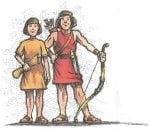
Entanglement is often called the most baffling and quintessential phenomenon in quantum mechanics. What is entanglement, in a nutshell? Two particles born from one reaction

Give me the Machpelah (double) Cave Genesis 23:9 The first legal acquisition of land in Israel takes place in this Torah portion, Chayei Sarah, when Abraham

Speak to the children of Israel and have them take for you a perfectly red unblemished cow, upon which no yoke was laid… The cow

Koraḥ the son of Yitzhar, the son of Kehos, the son of Levi took [himself to one side] along with Dasan and Aviram, the sons
I came across a post by Rabbi Herzl Hefter on Mekom Torah that I found so profound, I felt compelled to repost it here. The

And he dreamed, and behold! a ladder set up on the ground and its top reached to heaven; and behold, angels of G‑d were ascending
B’reshit bara Elokim et hashamaim v’et haaretz… In the beginning, G‑d created heaven and earth… Alternative translation: With two beginnings G‑d created heaven and earth…

And he shall take the two he goats, and place them before the Lord at the entrance to the Tent of Meeting. And Aaron shall